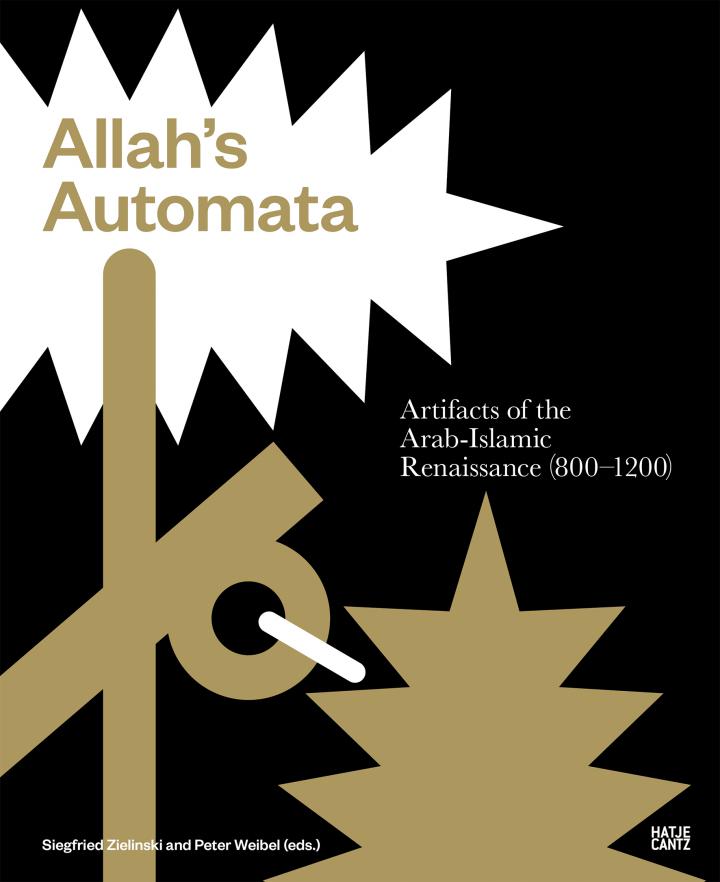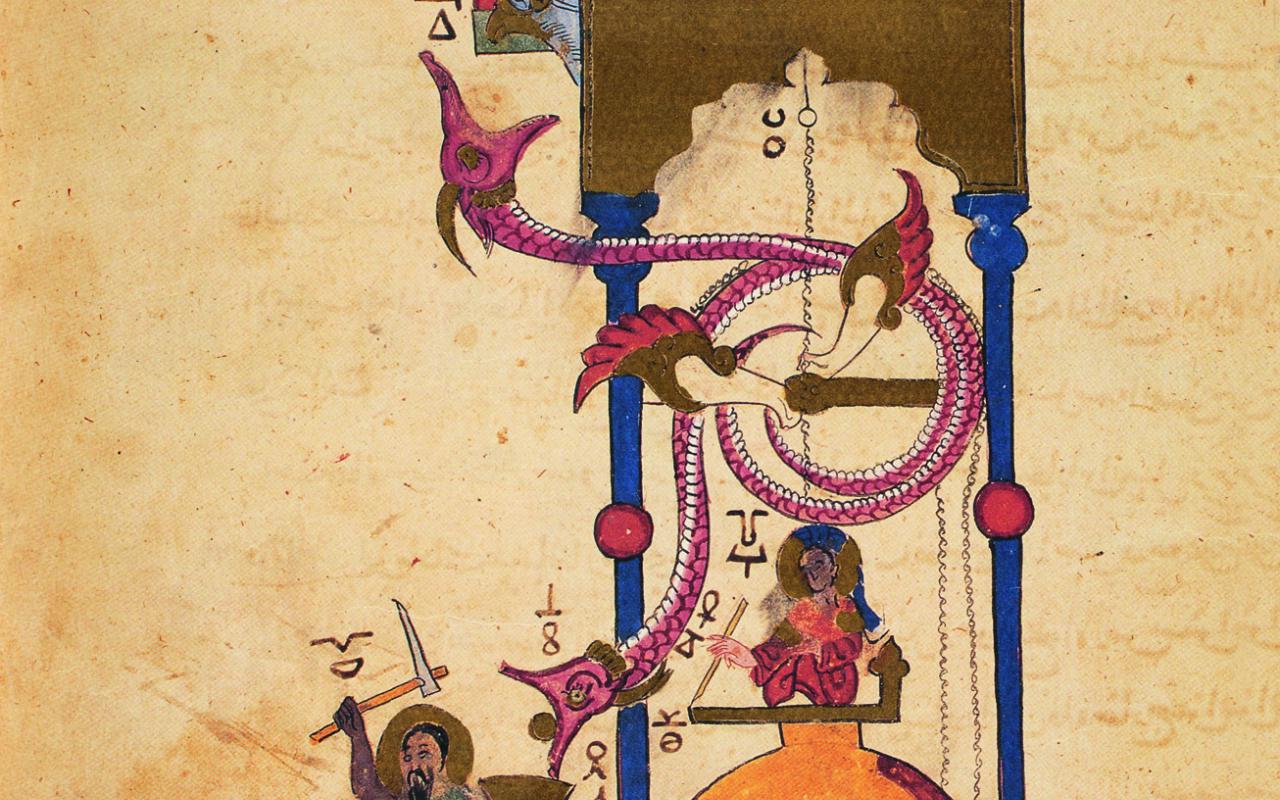- Type of publication
- Exhibition catalog
- Author / Editor
- Siegfried Zielinski and Peter Weibel (Eds.)
- Publishing house, place
- Hatje Cantz, Ostfildern
- Year
- 2015
- Content
- The first Renaissance did not take place in Europe, but in Mesopotamia. In terms of the archaeology of media, the Arab-Islamic culture of knowledge and the related art of engineering essentially interposed between antiquity and the early modern period in Europe. Accompanying the exhibition of the same name at ZKM | Karlsruhe, this publication contains essays, documents, and illustrations that illuminate in an exemplary way the fascinating world of automata developed and built during the Golden Age of Arab-Islamic culture between the ninth and thirteenth centuries. The main focus is on four manuscripts by master designers and builders of automata from Baghdad, northern Mesopotamia, and Andalusia. The machines constructed and described by the “sons of Mūsā,” the Banū Mūsā ibn Shākir, and also by Ibn al-Razzāz al-Jazarī, Ibn Khalaf al-Murādī, and Abū Ḥātim al-Muẓaffar al-Isfizārī in praise of God the Almighty are primarily indebted to the Greco-Alexandrian and Byzantine traditions, and interwoven with aspects of the ancient Chinese, Indian, and Persian cultures. These machines incorporate spectacular innovations that in Europe are associated with modern times: permanent energy supply, motion, programmability, and universalism
- Language
- English
- Description
- 152 p., approx. 80 ill., 22,50 x 27,50 cm, brochure
- ISBN
- 978-3-7757-4106-4
- Organization / Institution
- ZKM | Center for Art and Media
- Team

